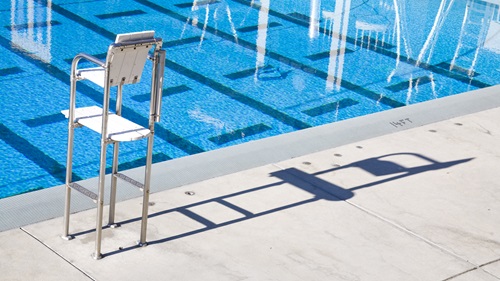
Photo © Sirirak Kaewgorn | Dreamstime.com
A lifeguard shortage is one thing but it is worsened when new guards are hired quickly and trained only in first aid and lifesaving – but not pool chemistry, water safety instruction and swim education, the far more involved certifications.
It’s not an isolated problem, and as cities continue to grapple with Poolmageddon, new strategies will be needed nationwide.
In Las Vegas, for example, the Abe Montoya Recreation Center pool has been closed because of a lack of personnel knowledgeable in pool chemistry, which includes not only understanding chlorine (or bromine) levels but pH balance and other factors. It also means understanding how to troubleshoot machinery like filtration equipment, chlorinators and more.
While some cities have instituted “swim at your own risk” policies, state laws (and sometimes even city and municipal regulations) may dictate whether this is a viable solution. Additionally, such policies may be predicated upon the supposition that the water is safe for swimming – which it may not be, if the chemistry is not supervised.
And just in case anyone has forgotten the health risks posed by unsanitized water, chlorine is necessary to knock out algae and dangerous microbes like cryptosporidium, legionella and brain-eating amoeba.

Learning this information is essential to pool management, and not having it can jeopardize the overall safety of the pool, its users and the operation of its equipment.
For example, lifeguards who have no training in pool chemistry may think swimmers' reports of burning, itchy eyes are a sign the chlorine level is too high; in actuality, those symptoms are far more likely to be caused by a pH imbalance. Lowering the chlorine level in a misguided attempt to alleviate swimmers' discomfort can do far more harm than good in terms of the water quality.
Despite the fact that there are online forums and websites dedicated to the issue of pool water management, they don’t guarantee that a reader will understand the chemical concepts, nor know what to do if the readings are off.
Recently, a man was pulled out of a hot tub at a Las Vegas gym where he had become unconscious; in addition to the near-drowning, it was noted that the health district undertook a post-incident investigation, finding what were termed multiple imminent health hazards with the hot tub, including low pH levels, high water temperatures and low chlorine disinfectant." (In the wake of the incident, the health department closed the hot tub and issued $1,778 in fines to the club. Two days later, the club reopened the hot tub after it passed another inspection.)
A second problem, and one that is no less serious, is a nationwide lack of individuals able to give swimming lessons. Being able to swim does not always result in being able to successfully teach others to do so and, in fact, most swimming instructors are expected to have Red Cross Swim Instructor Certification, which provides the skills needed to teach courses and make presentations to swimmers of every age and ability.
The Red Cross has two levels of certification:
Basic Swim Instructor, also known as BSI, courses train instructor candidates to teach the fundamental Learn-to-Swim courses including Parent and Child Aquatics, Preschool Aquatics, Learn-to-Swim Levels 1-3 and private swimming lessons (for the courses listed). BSI candidates are not required to perform advanced swimming strokes and skills such as butterfly, backstroke and diving.
Water Safety Instructor, also known as WSI™, courses train instructor candidates to teach all of the courses presented in the Swimming and Water Safety program to all age groups; all of the courses listed above, plus Learn-to-Swim Levels 4-6 and Adult Swim. This certification is considered to be the gold standard and provides the most comprehensive training for swim instructors.
And in the rush to train lifeguards and get them into chairs and on the pool deck – pool chemistry and swim instruction have been left behind.
“There is a shortage of swim instructors. We have a wait list for swim lessons, but we need swim instructors to be able to teach these people,” the YMCA’s Chris Scheuer told reporters at Yahoo! News.

“The one thing that keeps me up at night is that if one person drowns and they wanted to take swim lessons and we weren’t able to teach them,” said YMCA water safety instructor Regan Sands-Priest.
A shortage of those qualified to teach water safety exacerbates an existing problem: According to the Red Cross, drowning is the second-leading cause of accidental death for children between ages 1 and 5 years old. But if they have even basic water training in the same age range, the chances of dying in the water are reduced by almost 90 percent.
Some cities have turned to AI to try to help with the lifeguard shortage; however, as water safety personnel note, AI can only recognize swimmers in distress. It can’t teach water safety.
Related Content
- Battling Lifeguard Shortages, Cities Turn to A.I. to Boost Water Safety
- CDC Report Shows Crypto Cases on the Rise. What Event Owners Should Know When Choosing Sites for Swimming Events
- The ‘Brain-Eating Amoeba’ and Open-Water Sports Events: What Planners Need to Know
- What Sports Travel Planners Need to Know About Florida's Latest Health Threat: Legionnaire's Disease
- The Legionnaire’s Disease Outbreak in Atlanta: What Event Owners Should Know
- Blue-Green Algae Levels Could Affect Open Water Events

